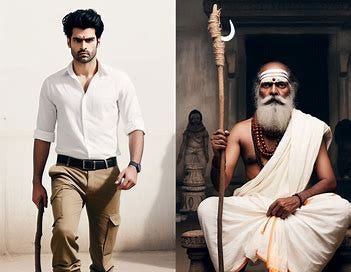Navigating the Nuances of Hindutva: Reformist Ideals vs. Traditionalist Values
An important churn
Hindutva, as an ideology, may not be as rigidly defined as Western ideologies like communism or liberalism. However, it encompasses core principles shaping its vision for society. These principles, increasingly identified with the Hindutva paradigm, include:
Anti-Caste System (Varna Vyavastha): Hindutva ideology often promotes equality and opposes the traditional caste system, advocating for a society where caste identities are diluted for a larger Hindu identity or cease to exist.
Samarasata (Community Harmony): Hindutva emphasizes fostering harmony and unity among different communities, envisioning a society where people from diverse backgrounds coexist peacefully.
Antyodaya (Upliftment of the Underprivileged): Hindutva ideology stresses the upliftment of marginalized and underprivileged sections of society, ensuring every individual, especially the "last person," has access to basic rights and opportunities for growth.
The concept of Hindu Rashtra, as envisaged by sincere Hindutva ideologues, is one where these principles form the foundation, with Hindu culture and civilization serving as the larger framework under which these principles operate.
Historically influential figures associated with Hindutva ideology, such as V.D. Savarkar, Guruji Golwalkar, and Deen Dayal Upadhyay, have articulated these core beliefs. Organizations like the Rashtriya Swayamsevak Sangh (RSS) and its affiliates, collectively known as the Sangh Parivar, have also championed these principles.
While Hindutva ideologues and organizations aim to uplift Hindu society, a fundamental principle—anti-caste rhetoric—stands in contrast with the core beliefs of historically traditional Hindu society. This anti-caste stance conflicts with the entrenched birth-based Varna-jati system traditionally followed in Bharatiya Hindu society for at least two millennia. Endogamy was strictly observed by Hindus, but there was often a disparity between the vocations traditionally associated with the different Varnas and their actual practice by individuals.
In the twentieth century, Dharmasamrat Swami Karpatri Maharaj and his Ram Rajya Parishad represented a modern embodiment of traditionalist thought. They diverged from the Sangh Parivar on significant issues, including the Varna Vyavastha. This divergence reflects a modern-era division created in traditional Hindu society due to the potential misapplication of egalitarian principles to the Varna-jaati complex.
It is important to note that within Hindu society, the traditionalist faction currently wields significantly less political and social influence compared to Hindutva-aligned groups. While online platforms may showcase vocal opposition from neo-traditionalist sections to the Sangh Parivar's worldview, the ground reality reflects substantial support for the Sangh among many Dharmic seers. The debate extends beyond the Varna Vyavastha, encompassing a fundamental disparity in approaches between the relatively reformist Sangh and the orthodox traditionalists concerning religion.
To illustrate this disparity, consider the issue of female priests officiating weddings. While many within the Sangh may not oppose this practice outright (though not unanimously), it is likely that supporters of female priests would predominantly emerge from the Sangh Parivar. In contrast, traditionalists staunchly oppose such practices, citing adherence to Shastras that clearly delineate rules. Add to this a new trend amongst the pro-Sangh ‘intellectuals’ which tries to contest the consumption of beef, positing that it’s alright for a Hindu to consume cow meat. This again is completely opposite to the position of traditionalist conservative thought.
This dichotomy underscores a fundamental difference in approach. The Sangh demonstrates a willingness to adapt certain Shastra-based rules in the interest of Hindu unity and in alignment with their belief in egalitarian principles. For instance, while they might support female priests, they might still uphold certain restrictions on women, such as those in the Sabarimala temple, arguing that similar rules apply to men in other temples, thereby preserving what they perceive as equality.
While the Sangh Parivar differs from Ambedkarites, Dravidianists, and Leftists in its approach to Hindu texts, it is indeed willing to make compromises in adherence to Shastras for what it deems the 'greater good' or the 'larger picture.' However, it is essential to note that even traditionalist sections of Hindu society have historically facilitated ease of religious practice for the average follower, albeit not necessarily driven by political motives or the desire to portray themselves as 'true liberals.' Regardless of their intentions, decisions regarding leniency towards Shastric injunctions should ideally rest with those who hold authority in religious matters, considering the context of Desh Kaal Paristithi (time, place, and circumstances).
Given the disparities between the Sangh and traditionalists regarding Hindu religious matters, a crucial question arises: Can the traditionalist faction coexist within the Hindutva framework as the Sangh Parivar gains strength and popularity, or does it need to pursue an alternative path to safeguard its core principles? With the growing influence of the Sangh, it might become increasingly challenging for traditionalists to assert their terms concerning Hindu religion. Moreover, the Sangh and its supporters may not be inclined to accommodate the concerns raised by traditionalists, particularly if they are critical of the BJP, Modi, or the Sangh, as evidenced during the Pran Pratistha of Ram Lalla.
This raises complex considerations for traditionalists within the Hindutva fold. They must weigh the preservation of their principles against the evolving landscape of Hindu politics and the potential marginalization within a dominant Sangh narrative.
In the past, individuals from the pro-Hindu side, such as Shri Sitaram Goel, have offered critiques of the Sangh Parivar. While the specific grievances he had with the Sangh Parivar are not currently familiar to me, it is possible that one aspect of contention could have been its approach towards dealing with Political Islam. However, delving into this topic warrants separate consideration, as it involves understanding the arguments critical of the Sangh Parivar's stance on Political Islam.
Furthermore, I have previously touched upon the challenges of accommodating Ambedkarite thought within the framework of Hindutva. It is important to examine these issues in detail to grasp the complexities surrounding the integration of diverse ideological perspectives within the broader Hindutva movement. An important churn is happening within Hindu society and it will be interesting to see in which direction we are headed.
This article first appeared on the author’s blog.





